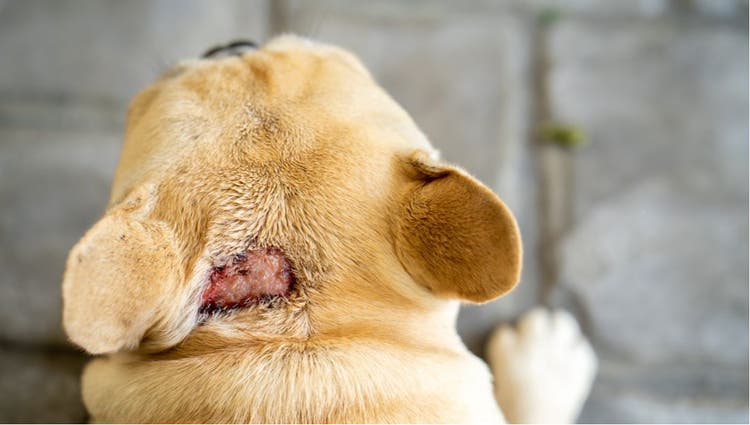Dog Tear Stains: What Causes Them & How to Help Naturally
Tear stains are a common concern for dog owners, especially those with light-coloured breeds. The reddish-brown streaks that appear beneath the eyes can seem harmless, but they may be a sign of underlying health issues — from poor digestion to excessive tear production. In this guide, we’ll break down what causes tear stains, which dogs are most affected, and how you can tackle the problem naturally and effectively.
What Are Tear Stains, Exactly?
Tear stains are the result of excess tear production (a condition known as epiphora), where the tears overflow onto the face instead of draining through the tear ducts. These tears contain waste products and porphyrin — a pigment that turns reddish-brown when exposed to air.
The stains are most visible on white or light-coloured coats, but any dog can be affected. While the marks themselves aren’t always dangerous, they can indicate other problems worth addressing.
What Causes Tear Stains in Dogs?
There isn’t just one cause of tear stains — it’s usually a combination of factors. Here are the most common contributors:
- Blocked Tear Ducts: Some dogs naturally have narrower tear ducts or experience blockages that prevent tears from draining properly. This can be genetic or triggered by infection, inflammation, or injury.
- Eye Shape & Breed Traits: Flat-faced (brachycephalic) breeds like Bulldogs, Pugs, Shih Tzus, and Boxers are more prone to tear stains due to the shape of their skull and shallow eye sockets. Breeds with long facial hair near the eyes can also suffer more, as hair traps moisture.
- Poor Diet & Digestive Health: What goes on in the gut often shows up on the face. Dogs with food intolerances, allergies, or imbalanced microbiomes are more likely to overproduce tears and have inflamed tear ducts. Diets that are high in fillers or low in essential nutrients can also make things worse. Read our Gut Reset Plan for Dogs
- Water Quality: Tap water with high mineral content (especially iron) may increase porphyrin build-up in some dogs. Filtered water can make a noticeable difference for sensitive pups.
- Yeast or Bacterial Overgrowth: Constant moisture around the eyes can create the perfect environment for bacteria or yeast (like Malassezia) to thrive, darkening the stain and potentially causing irritation.
Natural Solutions for Tear Stains
- Improve Digestive Health: The gut and immune system are closely linked. Adding a high-quality pre and probiotic can help balance your dog’s microbiome, reduce inflammation, and support better nutrient absorption — which in turn may decrease tear production. See our Pre & Probiotic Chews
- Switch to Filtered Water: Try offering filtered or bottled water instead of tap. It’s a simple change, but one that has helped many owners reduce porphyrin levels in tear stains, especially in areas with hard water.
- Regular Facial Cleaning (Gently): Use a damp, soft cloth or natural tear stain wipes to clean the area around the eyes daily. Avoid products with harsh chemicals or bleach — go for soothing ingredients like aloe vera, chamomile, or witch hazel.
- Keep Hair Trimmed: Keep the fur around your dog’s eyes short to prevent tears from clinging to the hair. A professional groomer can help shape this area carefully without irritating the skin.
- Support Skin Health from Within: Supplements rich in omega-3 fatty acids, zinc, and vitamin E support healthy skin and reduce the likelihood of infections around the eye area. Explore our Skin & Coat Treats
When to See Your Vet
If your dog’s tear stains are accompanied by:
- Red, inflamed eyes
- Discharge with odour or pus
- Scratching or rubbing their face
- Sudden increase in tear production
…it’s time for a vet visit. Your vet may check for infections, eyelash abnormalities, or tear duct issues that need more direct treatment.
Final Thoughts
Tear stains are often a cosmetic nuisance — but they’re also a useful signal. They can reflect what’s happening inside your dog’s body, from diet to gut health to water quality. Tackling them naturally is not only possible but often more effective long-term than harsh chemical removers.
With the right daily habits, nutritional support, and a bit of patience, you’ll not only reduce the stains — you’ll support your dog’s overall wellbeing too.
→ Explore our gut and skin support range




Leave a comment
This site is protected by hCaptcha and the hCaptcha Privacy Policy and Terms of Service apply.